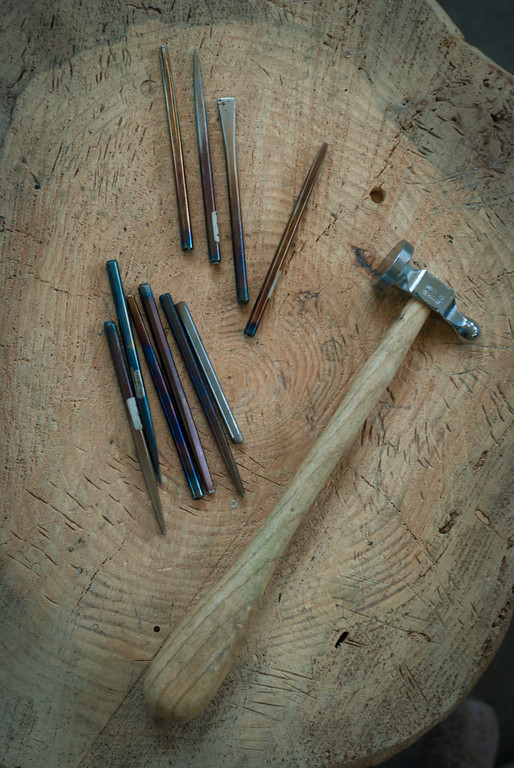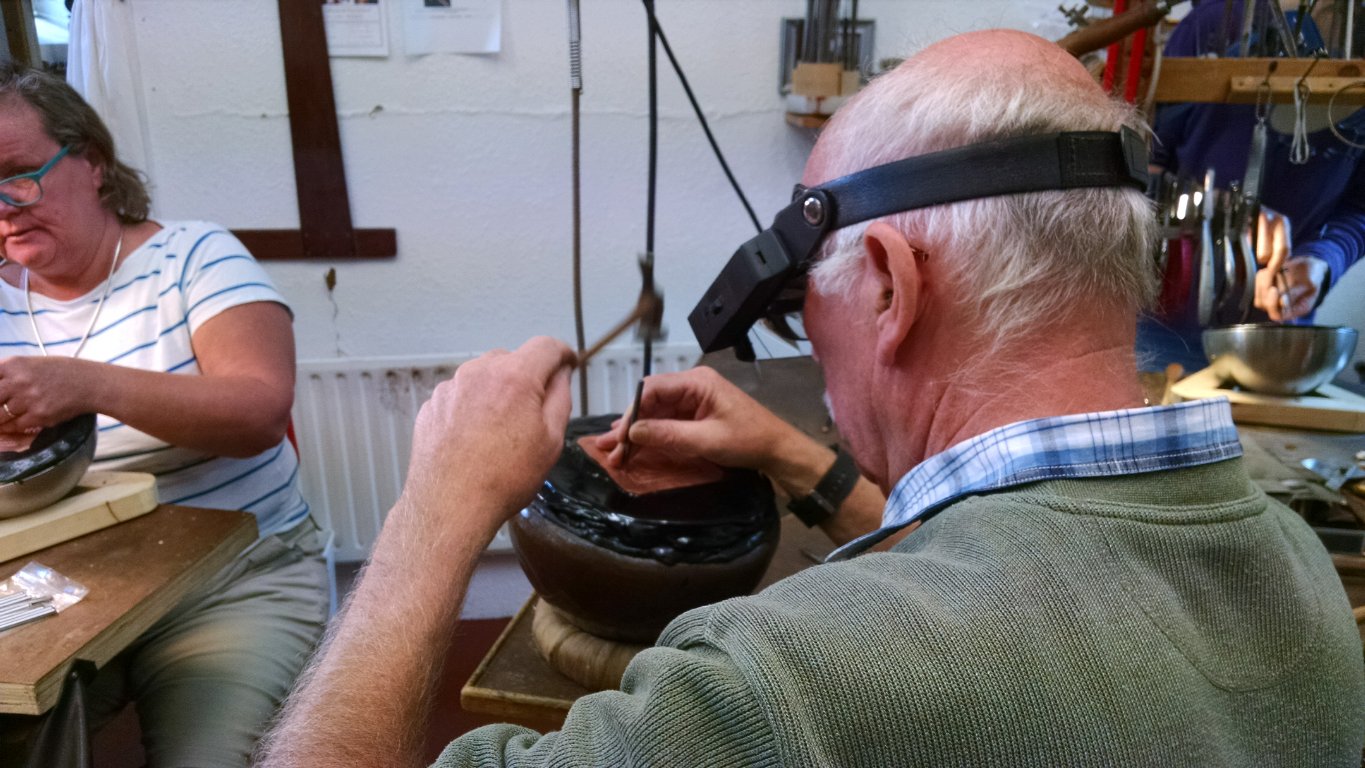My jewelry is hand fabricated, with a special focus on texture. I combine a variety of textures with mixed metals and stones or found objects to evoke memory, place and time. Metals such as copper, silver and gold are often used and mixed within the same piece.
One of my favorite metals is shibuichi. It is an alloy of copper and silver, developed in Japan centuries ago and used as Samurai sword hilt decoration. It takes patina beautifully!
Etched labyrinth earrings, shibuichi, gold, garnets. photo by Marcy Merrill
To get the textures that evoke what I see on the beach, I often etch the metal in acid and proceed from there. It involves masking the parts of metal (ussually copper or silver) that I don’t want to be worn away by acid, and leaving the rest of the metal exposed, to interact with the chemicals.
Masked area of design is blue, the copper has been submerged in acid and eroded in the uncovered areas.
Etched copper was formed into a cuff, with stones and rivets added. photo by Marcy Merrill
I love the classic form of ancient jewelry. For the past few years I have been studying and using metal working techniques that date back thousands of years, including the use of rocks as tools to form metal. It is much slower going, but to me, best serves the purpose.
Hand formed ancient style rings with coins, tool by Bill Dawson
In 2014 I studied chasing, (creating a dimensional surface design in metal) in Ireland with Brian Clarke. The process begins with embedding a piece of metal into a bowl of warm tree pitch, which will hold it secure when cooled. A hammer and stainless tools (most are handmade) are used to create lines and depressions in the metal, which eventually raise in the areas around the hammered lines. The photo shows Brian Clarke in his workshop, demonstrating chasing technique.

Here is a chased amulet I made after returning from Ireland. The metal is shibuichi with silver.
One of my favorite texturing techniques is called reticulation. A specially prepared sheet of 80% silver and 20% copper is heat scarred with a torch to a nearly molten state. The different cooling rates of the two metals cause the sheet to buckle, creating random patterns of ridges and valleys. I love the fluidity of this process, which resembles the marks left on the sand at low tide.
In the blog archives you will find more detailed stories about etching, patina process, my Ireland journey and chasing workshop, finding sea glass on the English coast and more…I invite you to take a look and share the process of discovery with me!







